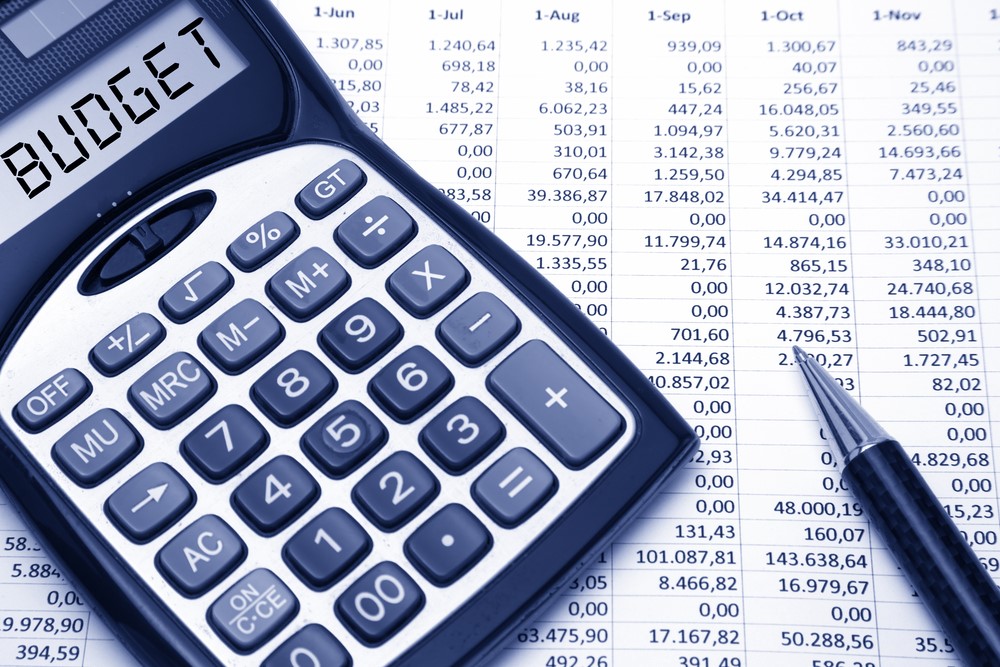
In an age of massive consumer debt, credit cards run amuck, astonishing national debts, and banks closing their doors, there are plenty of reasons to save money.
Unfortunately, many people have never been educated on how to save money.
But we’ve got some good news. There are an astonishing number of ways to save money these days, all of which can give your budget a serious boost.
Here are some of our favorite money-saving tips.
Why Save Money?
Trying to save money can be frustrating, especially as the bills pile up faster than you can pay them. But saving money is essential. It’s your financial safety net and a way of protecting yourself in the event of unforeseen circumstances.
Saving money is about taking a common-sense approach. Oftentimes, the best way to save money is in making small changes. Things like switching to generics and cutting back on $6 lattes can leave you with money to spare at the end of the month.
Ultimately, saving money involves one key principle: Discipline.
It’s easy to understand why you should put money away. What’s hard is actually understanding how to save money, and then choosing the strategies that work for you and your budget.
Saving starts with a good savings account.
Shop around and compare interest rates of different bank savings accounts. Just remember that some savings accounts require a minimum deposit and/or a minimum balance.
Once you’ve got a savings account, it’s time to start putting money into it. Here are some simple suggestions that will help you fill up that new savings account.
5 Big Steps To Take To Save Money

There are many reasons to save money and many methods to utilize. Some of these money saving tips are big, overarching suggestions, while others are smaller and more practical. Here are our big picture tips. We’ll hit the more practical suggestions below.
Tip #1: Create Your Emergency Fund
Start by building an emergency fund. This is a critical part of an overall savings plan. When deciding on an amount for your emergency fund, think about this: if I or my spouse lost employment, would we be able to cover our bills for three months? Or, ask yourself, if one of our cars needed major repairs, what might that cost look like?
Tip #2: Create Your Budget
The second step is to establish a budget. Take a look at every receipt and expenditure for the past couple of months. Figure out what your necessities are, how much you spend on recreation, and how much is leftover for saving.
There are several good budgeting programs out there, like Quicken. Or, you could use the old-fashioned budget with cash and envelopes. If you overspend a lot, the envelope budget system uses a set amount of cash for each spending category. After the cash is gone, you have nothing more to spend.
Tip #3: Implement Automatic Savings
Another option is automatic savings. Most banks will give you the option of transferring money from your main account to a savings account on a given day each month. You can also have your employer deduct a certain amount from your paycheck every pay-period and deposit it in a retirement account.
Tip #4: Prepare For Retirement
Speaking of retirement, you must start saving for retirement as early as you can. People don’t maintain their lifestyle after retirement by saving in a savings account. Retirement plans offer the miracle of compound interest that builds wealth.
And, if your employer offers matching contributions to your retirement fund, take full advantage of it. Invest the maximum you can to receive the most from employer contributions.
Tip #5: Save Your Extra Money and Loose Change
Save bonuses and tax refunds. It’s tempting to use that money to treat yourself or give your family a new, expensive appliance. However, that money is best put to use in a savings account.
And don’t underestimate the power of loose change. Really! Most banks or grocery stores have machines where you can bring your loose change and receive cash or vouchers towards your purchases. Throwing your day’s loose change into a bowl or container every night will add up quickly!
While there are literally hundreds of strategies for saving money on a daily, weekly, monthly, and annual basis, it’s all for nothing if you don’t have a budget in place.
20 Practical Ways to Save Money

Now that we’ve hit the big picture items, let’s look at some smaller, more practical ways to save money regularly.
- Use an automated tool or app to automatically put small amounts in your savings account
- Prep for grocery shopping so that you don’t overspend
- Order smaller servings at restaurants
- Get discounts on entertainment
- Map out major purchases so that they fit into your budget rather than buying on impulse
- Restrict online shopping so that you’re not making impulse buys while surfing the internet
- Bundle cable and internet services to get a lower rate
- Switch your cell phone plan to a cheaper option
- Monitor your electric bill and take actions to reduce electricity usage (turn A/C off when leaving the house, turn off lights, etc.
- Lower your car payment by refinancing
- Lower your student loan payments by refinancing
Oftentimes, changing just one habit can you save you lots in the long run - Give up coffee or reduce alcohol consumption. It not only saves you money, but there are definite health benefits
- Cancel your gym membership and work out at home
- Take your lunch to work instead of eating out
- Borrow books and movies from the library
- Lock up your credit card for a month and only pay in cash
- Review your bank statements and compare them to your budget
- Set limits for birthday and Christmas presents
- Share gardening tools and equipment with your family
- Shop around for car insurance
All of these tips and strategies are great for creating immediate, short-term gains. But, it is also important to have a long-term plan, as well as a budget to help you implement your saving plans.
How to Create A Money-Saving Budget

As noted above, creating a budget is critical to saving money. Unfortunately, many people have no idea how to do this and have never implemented a budget.
Do you know where your money is going each pay day? The importance of a budget is that it keeps you focused on what you have and how you spend it.
Keeping track of deposits and withdrawals from your bank account is easy thanks to the financial apps that we can access. Work with your spouse or partner to create a spending plan and use a method that will help you track how you’re using your money.
Budgets can be created in software like Quicken or GnuCash, or you can use a simple spreadsheet.
Even without these options, you need a way to determine where the money is going every month. Creating a budget with software can give you more control of your finances and let you visualize how you can save money. So, what are the steps to creating a budget?
Step 1: Determine Your Monthly Net Income
The first step is not making the mistake of using your gross income to create your budget. Subtract deductions, like Social Security, taxes, 401(k) and flexible spending account allocations, as you create a budget.
Step 2: Track All Spending
You need to keep track of and categorize your spending to identify where you can make adjustments. This will help you to decide where to cut back on spending. Start by listing your fixed expenses (car payments, mortgage, utilities) and then list your variable expenses (gas, groceries, entertainment).
Step 3: Set Attainable Goals
Before you start analyzing what you’ve tracked, create a list of your short-term (12 months or less) and long-term (years to decades) financial goals Remember, identifying your priorities before budgeting will help.
Step 4: Create a Budget
Take all spending for the next few months into consideration. Review your past spending habits to forecast your variable expenses. You can even break down your expenses between necessities and luxuries.
Step 5: Adjust Spending Habits as Needed
Once you have your budget, you can start to see where you have excess dollars or where you can redirect unnecessary spending to savings. As you make adjustments, track how much money you save.
Step 6: Stay on Top of Your Budget
Everyone should review their budget regularly to keep on track. Things can come up: You may get a raise at work, unexpected expenses may increase, or you could reach your goal and want to create a new goal.
Once you have a good sense of what money is coming in and where it is going out, you can look at ways to save on expenses.
Creating Long-term Savings Plans

Don’t wait until you’re five years from retirement to start saving. If you want to maintain your current lifestyle, you will need a significant amount of retirement money. It’s important to create a balance in your long-term savings plans when considering things like college for your kids, replacing vehicles, or potential health issues that are costly.
The critical thing to think about when saving for retirement is this: Start now.
Why? Several reasons.
Compound Interest. This was mentioned before, but the best way to understand it is to view an example.
If two people put away the same amount of money each year ($5,000), earn the same return on investments (6 percent annually) and stop saving when they retire at the same age (67), one will end up with nearly twice as much money just by starting at 22 instead of 32. Put another way: The investor who started 10 years earlier would have about $500,000 more at retirement.
Make saving a habit. While it makes rational, fiduciary sense to start early, it isn’t always easy. But once you see that account balance growing, your instinct to save will increase.
How much should you save? As much as you reasonably can. Work within your budget and add a bit more each year. It is also important to learn about investing. The more you know, the better choices you’ll make. You could make lots more from your investments and save a ton of money in fees.
There are also certain types of investments that can yield significant benefits:
Low-cost mutual funds
Employer 401(k) matches
Flexible spending accounts.
Health savings accounts
The key to long-term investments is remembering that you will not see immediate results. These investments are all for the future.
Conclusion
Saving money, whether on daily purchases, in short-term savings accounts, or in long-term investments, is something that every family should take seriously. We all need money for our daily expenses, our little luxuries, and the big emergencies we never see coming.
Come up with a budget, a savings plan, and an investment plan to secure the well-being of your family and your future.
Original article from dccu.us

An outstanding share! I’ve just forwarded this onto a colleague
who has been doing a little homework on this. And
he actually bought me lunch simply because I discovered it for him…
lol. So let me reword this…. Thank YOU for the meal!!
But yeah, thanks for spending time to talk about this matter here on your internet site.
Thanks for your kind words.